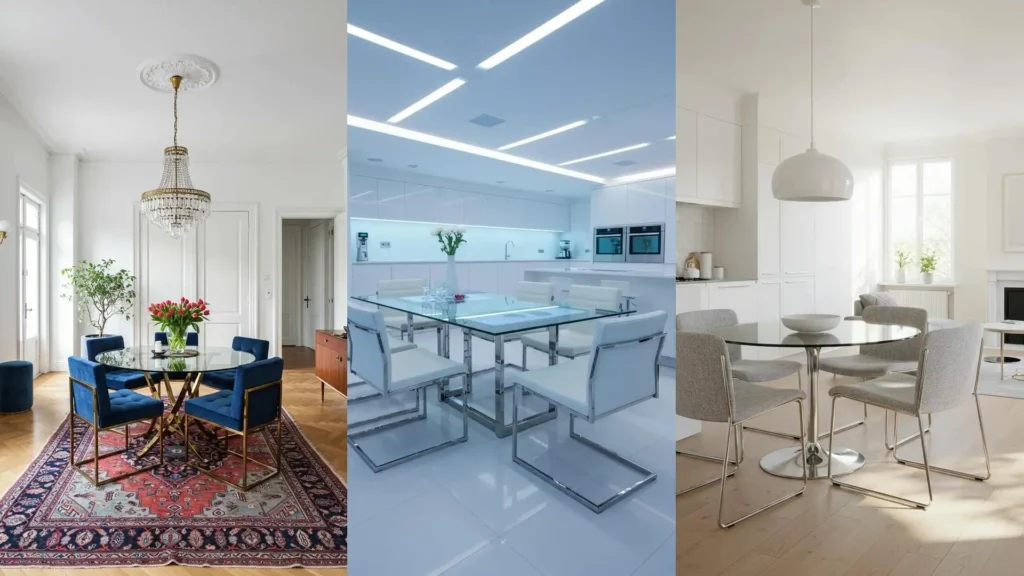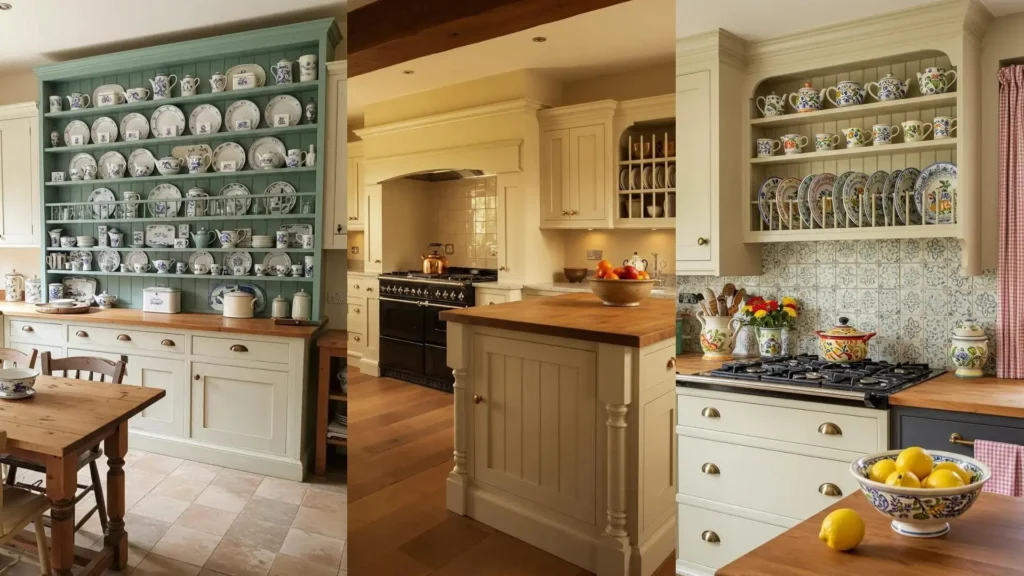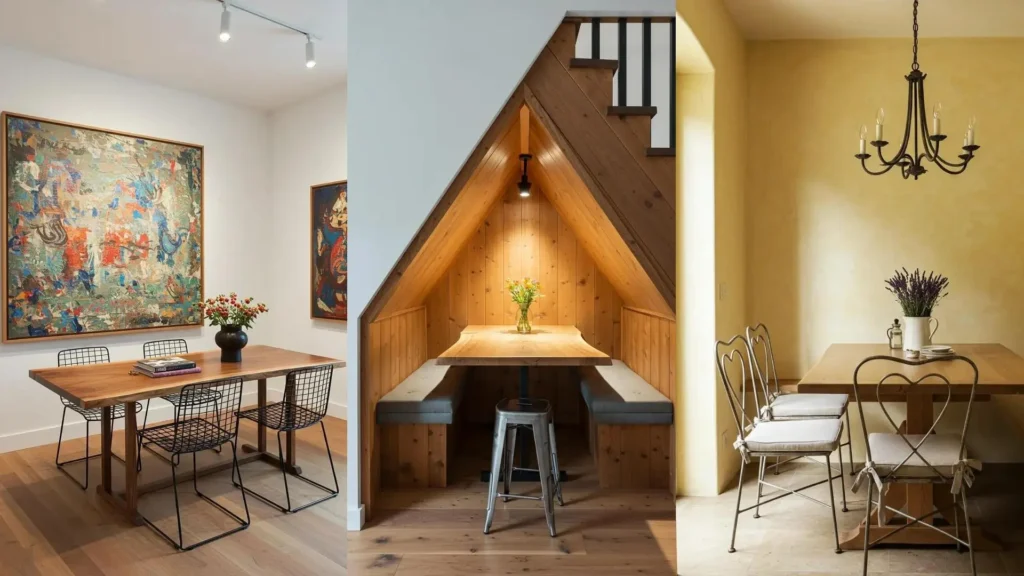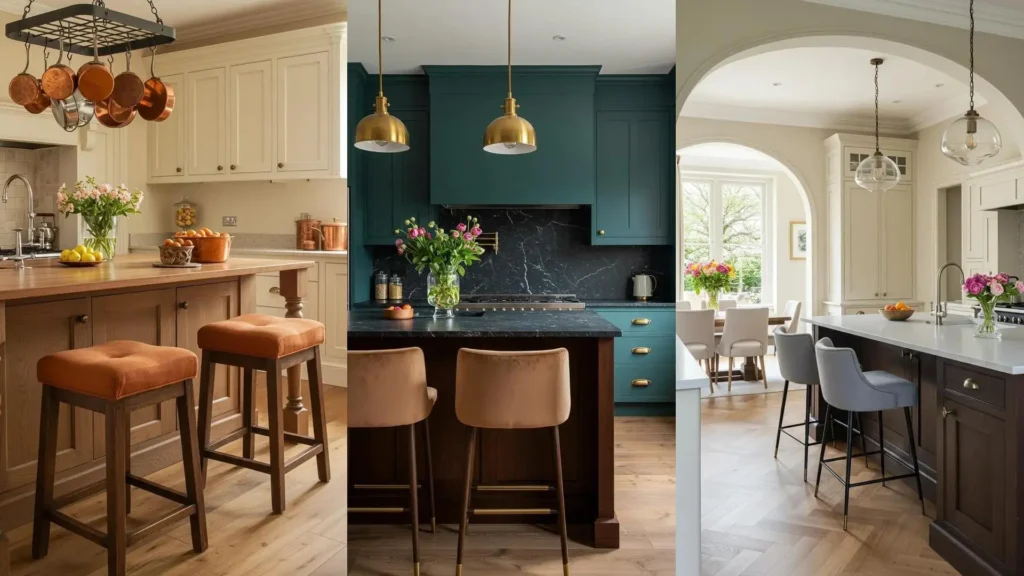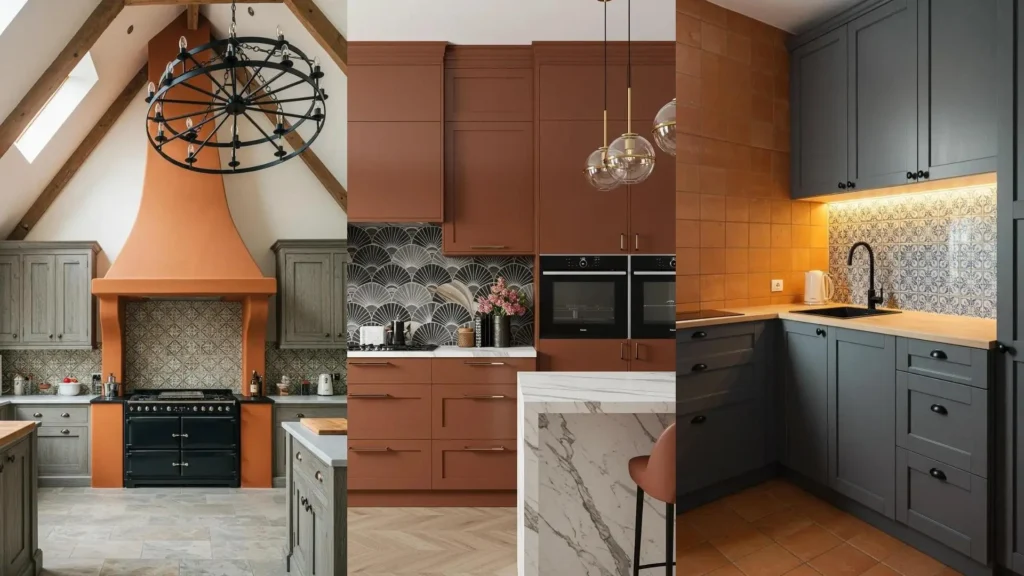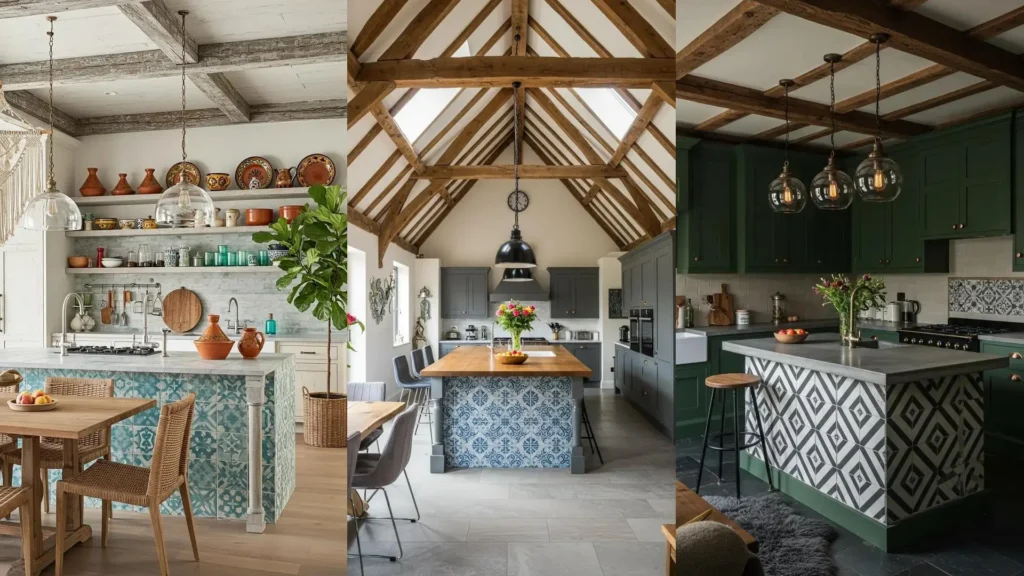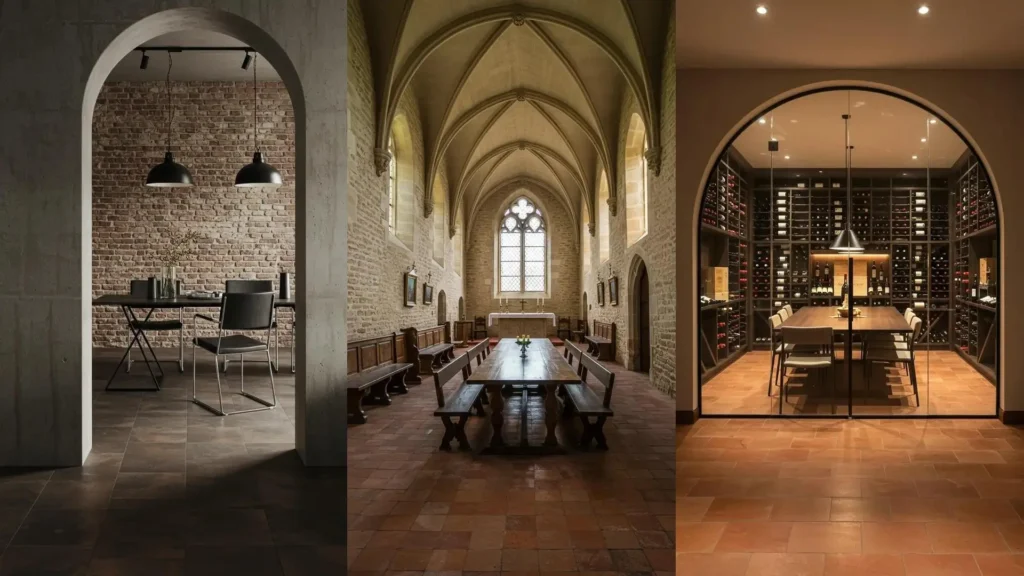An open-concept dining area presents a unique opportunity: to create a space that feels both connected and distinct, airy yet intimate.
The key is not to fill the space, but to define it with intention. A glass table paired with the clean lines of steel-frame chairs is a masterful starting point, offering transparency that preserves an open feel while providing essential function.
Here, you’ll discover how to leverage this pairing to create a dining area that is not just a place to eat, but a composed, elegant, and resonant part of your home.
1. Frame the View, Not the Furniture
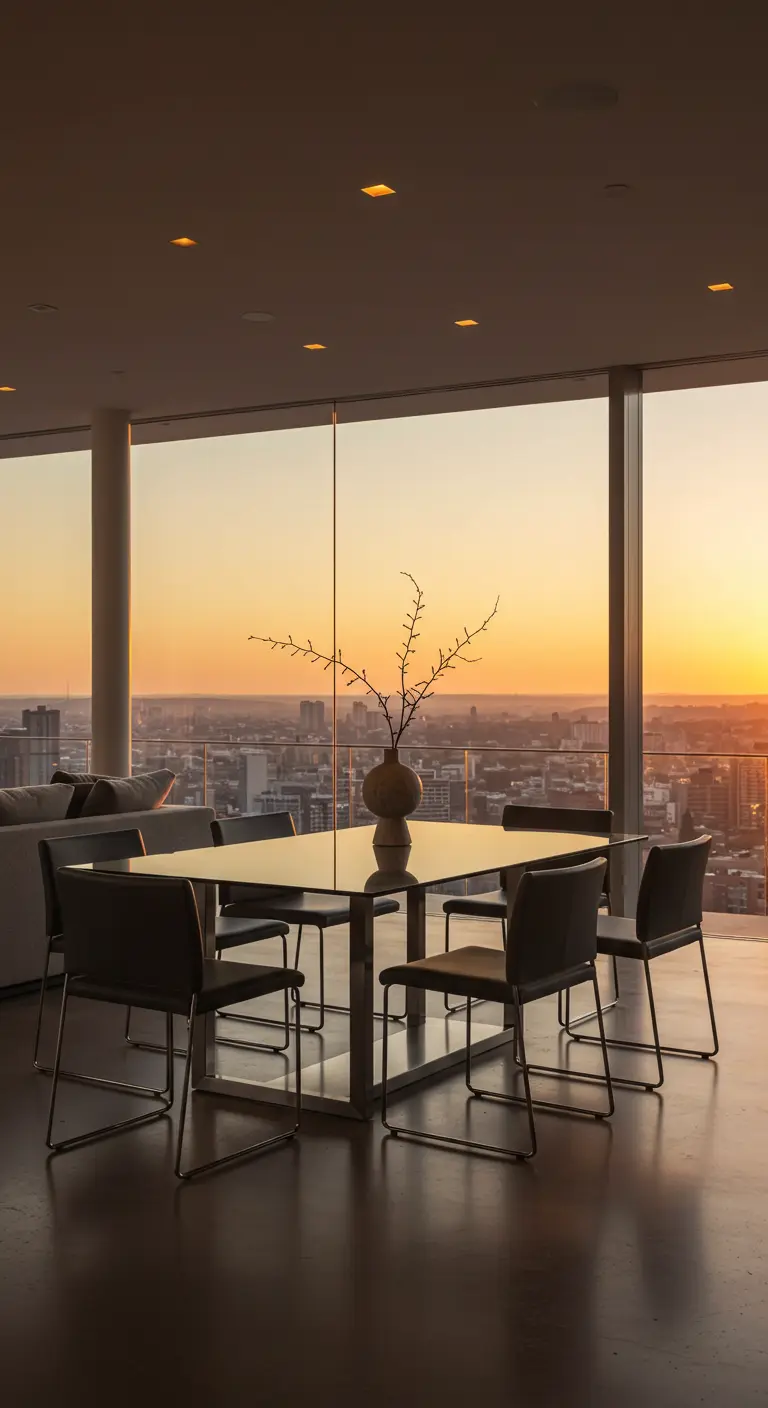
When your dining area overlooks a stunning vista, the goal is to minimize visual obstruction.
A glass tabletop is the perfect choice, as it creates a functional surface that you can practically see through, allowing the cityscape or landscape to remain the focal point.
Choose low-profile chairs in a dark, neutral color that recede into the background, and keep tabletop décor to a single, sculptural element like a vase with bare branches.
For lighting, opt for recessed ceiling lights on a dimmer to provide warm ambiance without creating glare on the windows at night.
2. Create Softness with Texture and Curves
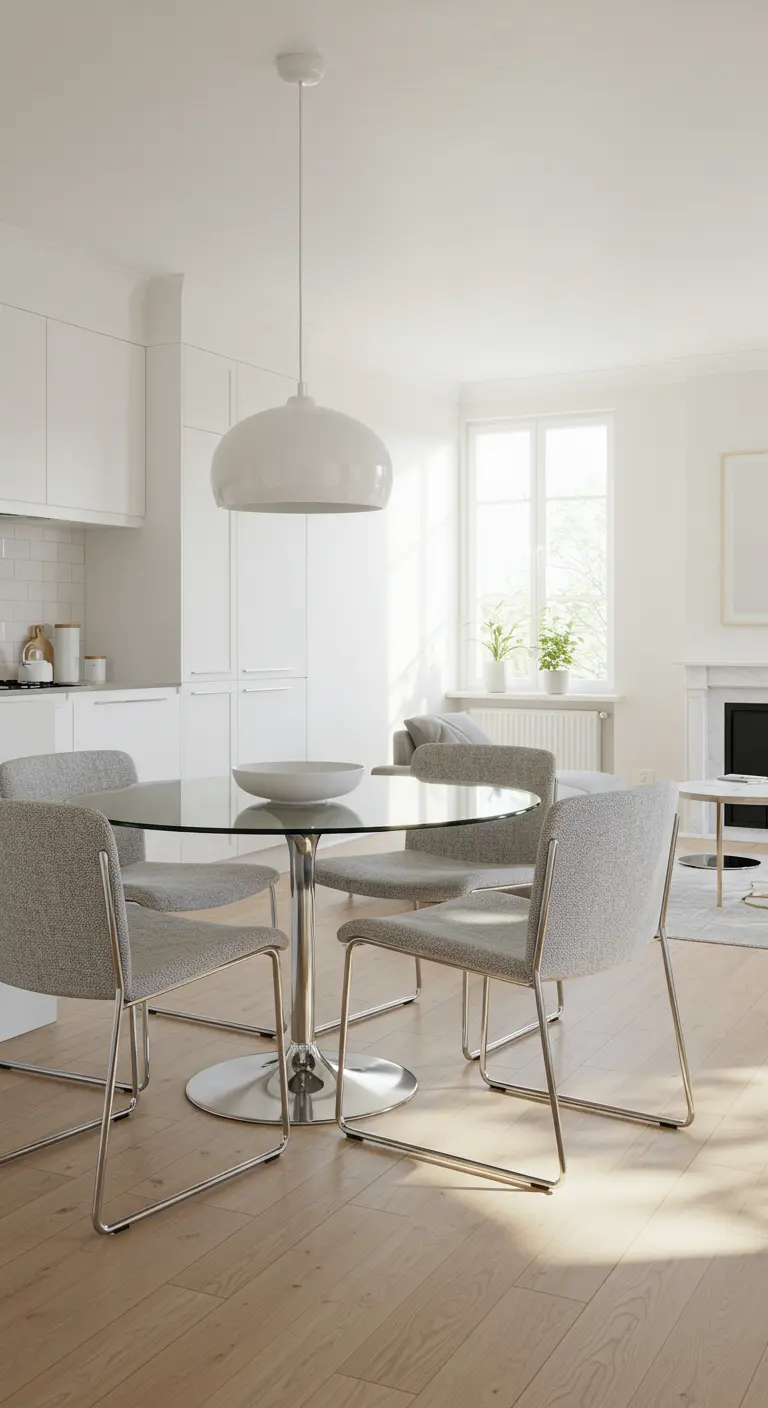
In an all-white or neutral space, prevent a clinical feel by introducing varied textures and soft shapes.
Contrast the sleek, cool surfaces of a glass table and chrome base with chairs upholstered in a tactile fabric like bouclé, tweed, or a soft wool.
A round table encourages easier conversation and improves traffic flow in a compact area.
Anchor the setting with a large, low-hanging dome pendant to create a sense of intimacy and define the dining zone.
3. Marry Industrial Edge with Polished Transparency

Balance the visual weight of raw, industrial materials with the elemental lightness of glass.
In a loft with exposed brick walls and a concrete floor, a heavy wooden table could make the space feel dark and dense.
A glass top, however, maintains an airy feel and reflects light, while industrial-style steel chairs with wood seats provide a cohesive link to the room’s utilitarian roots and add a touch of warmth.
4. Channel Breezy Sophistication with Sheer Layers
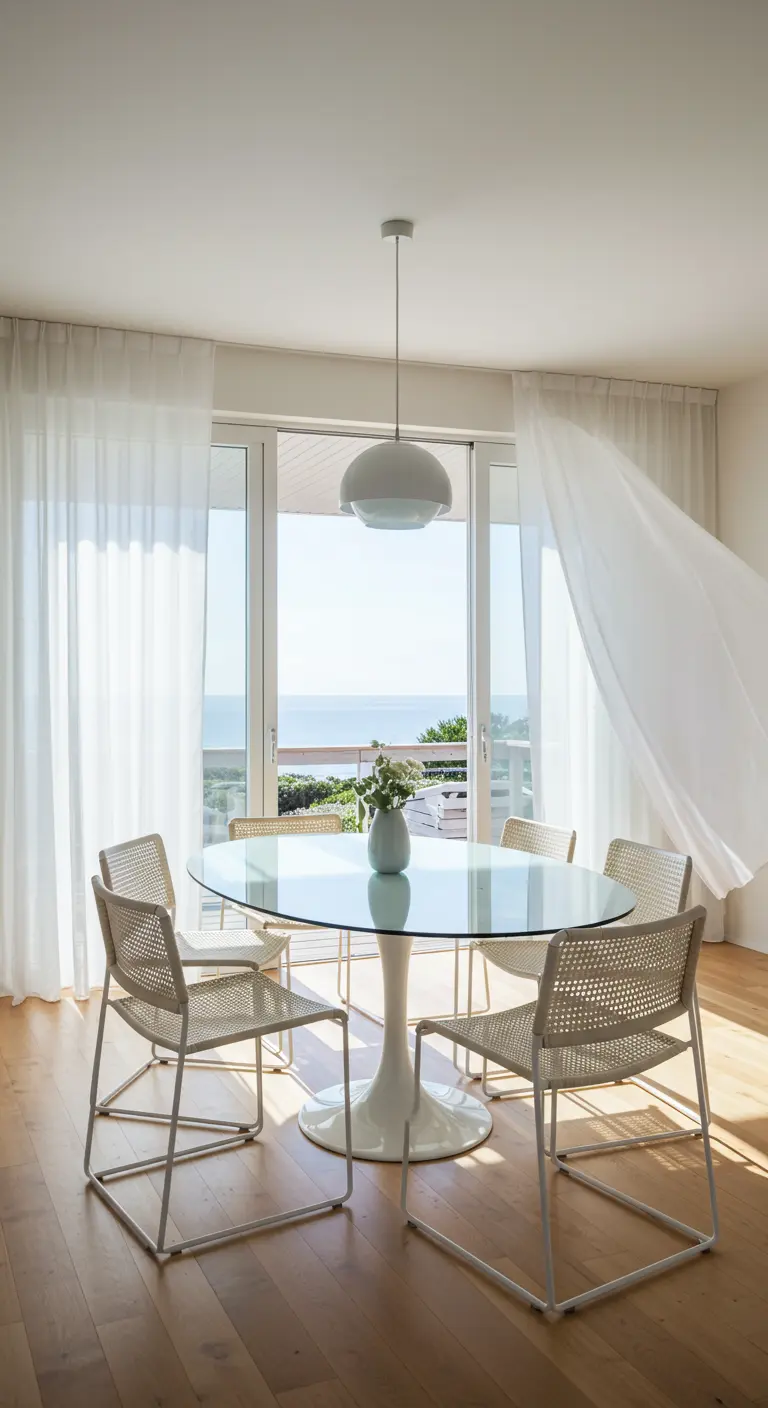
To cultivate an airy, coastal atmosphere, make natural light your primary design tool.
Pair a glass-topped table with chairs made from natural, woven materials like cane or rattan to introduce organic texture.
Install floor-to-ceiling sheer white curtains; they diffuse harsh sunlight into a soft glow and add beautiful movement when they catch a breeze, enhancing the relaxed, elegant feel.
5. Anchor a Grand Space with a Statement Pendant
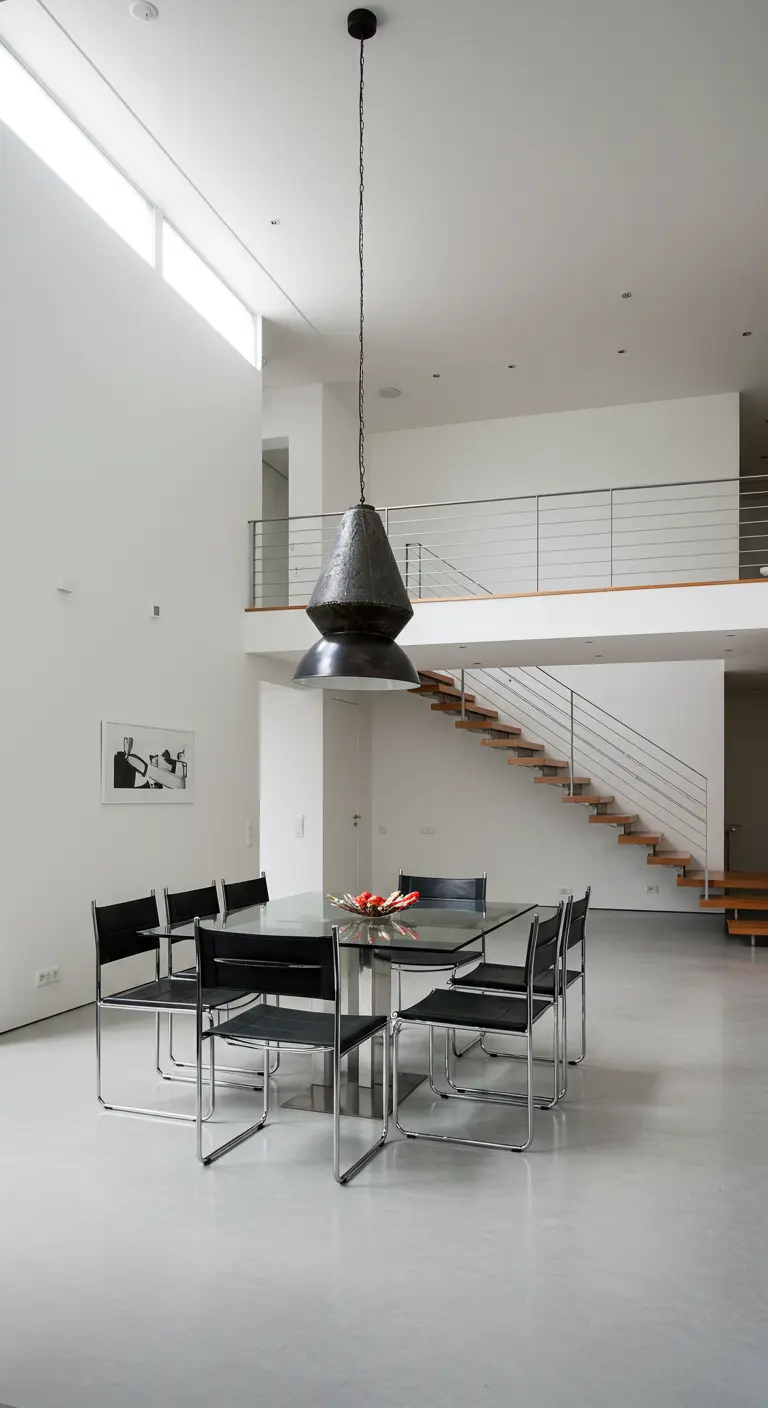
In a minimalist room with soaring ceilings, a large, dramatic pendant light is essential for creating a sense of scale and place.
Hanging it low over the dining table establishes an intimate, human-scaled zone within the vastness of the open-plan space.
The combination of a glass table and architectural cantilever chairs adds sophisticated form without visual bulk, allowing the pendant to remain the undisputed focal point.
6. Embrace Restraint for a Zen-Like Atmosphere
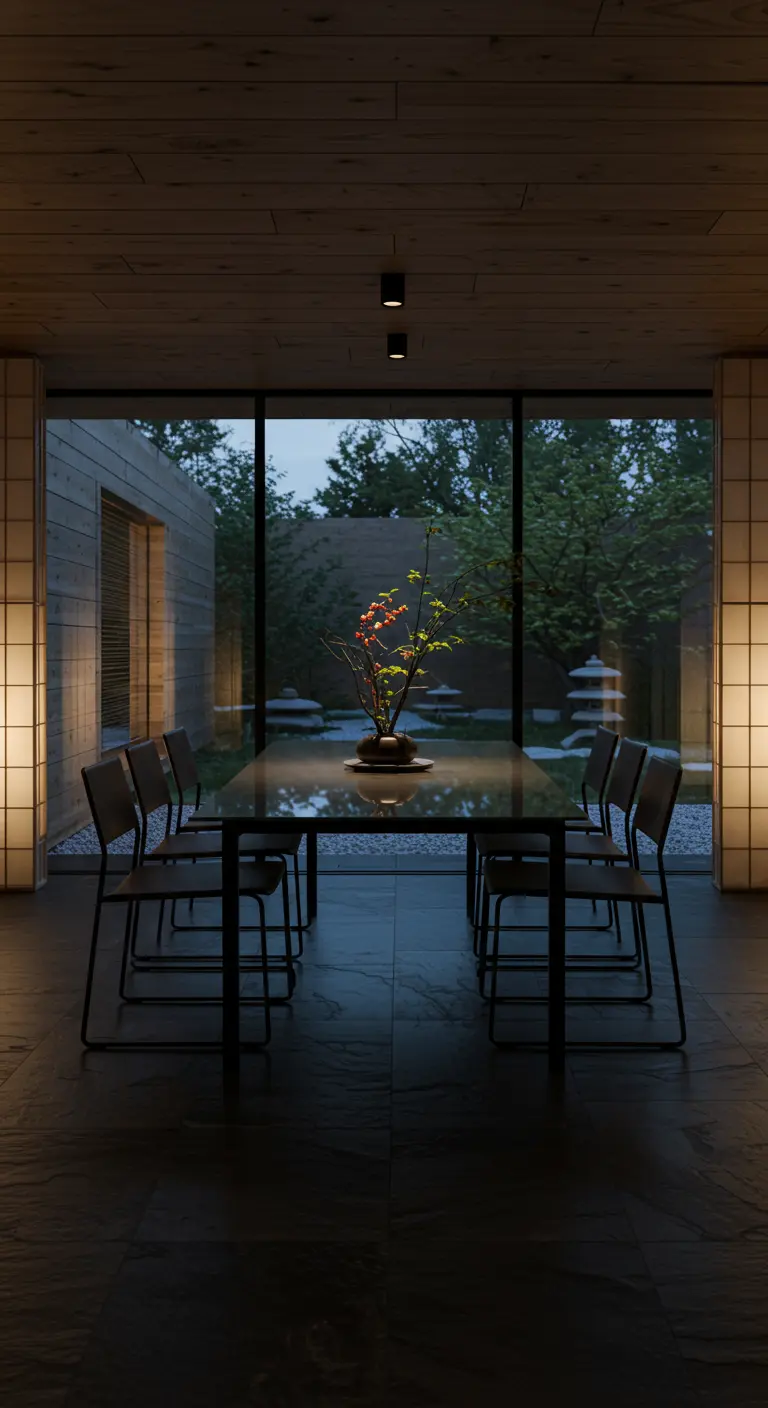
A tranquil dining experience begins with thoughtful reduction.
In a space designed for contemplation, a simple glass table on a spare, dark frame seems to float, preserving an uninterrupted view of a serene garden.
This approach, central to Japandi-style interiors, prioritizes clean lines, natural materials, and a profound connection to the outdoors.
Low, focused lighting from sconces or discreet ceiling fixtures maintains a calm, moody ambiance after dark.
7. Let Your Table Be the Sculpture

When your dining table features a stunning, sculptural base, treat it as the central work of art.
To ensure it commands full attention, select chairs that are visually silent. Clear acrylic or lucite chairs are the perfect choice, as their transparency allows the table’s artistic form to be seen from every angle.
This strategy is particularly effective in a minimalist, gallery-like space where you want to highlight one magnificent piece.
8. Modernize a Classic Kitchen with Bold Color
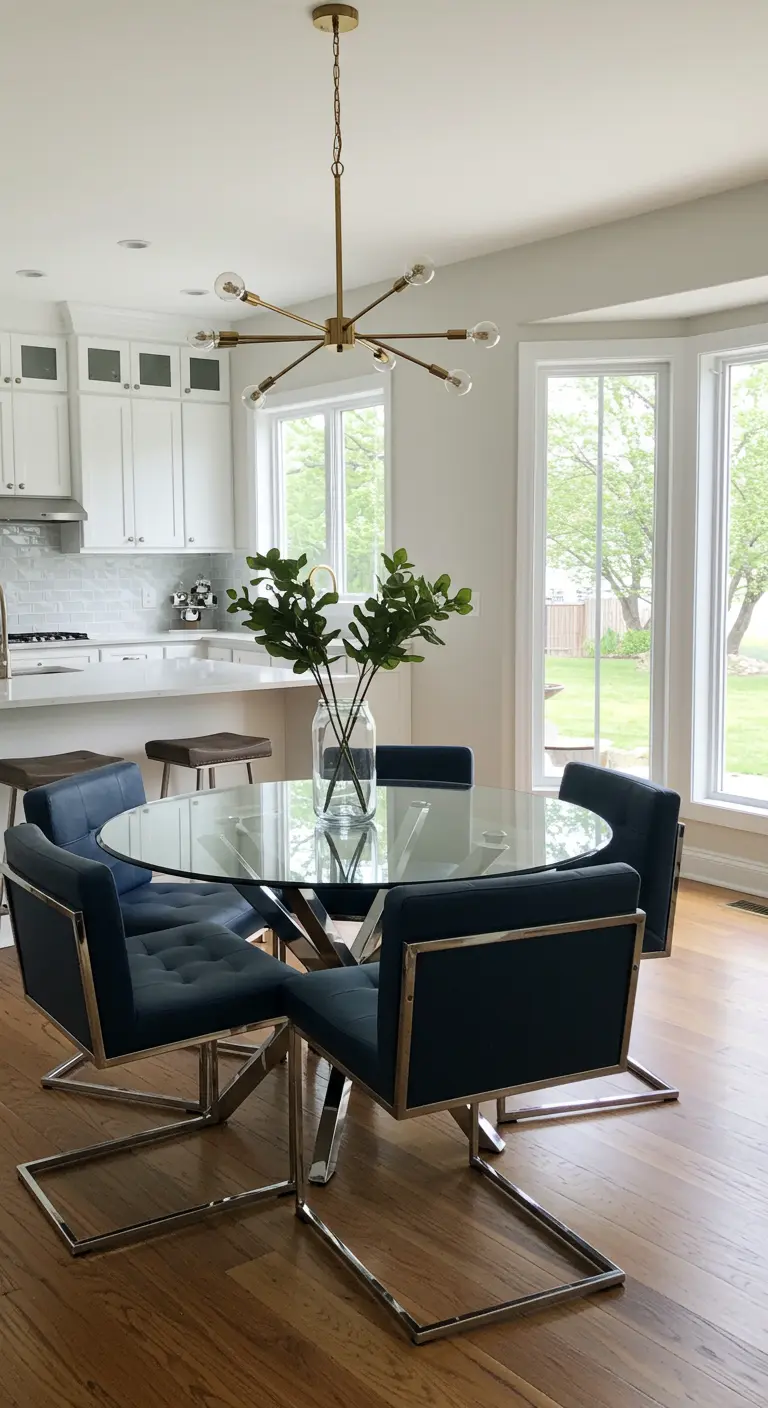
Bridge the gap between traditional architecture and contemporary living by introducing modern pieces in a confident, saturated color.
In this bright, classic kitchen, upholstered dining chairs in deep navy blue provide a sophisticated, unexpected contrast to the white cabinetry.
A modern Sputnik chandelier and a sleek glass table act as transitional elements, tying the old and new together into a cohesive, personal look.
9. Soften Concrete with Reflective Surfaces
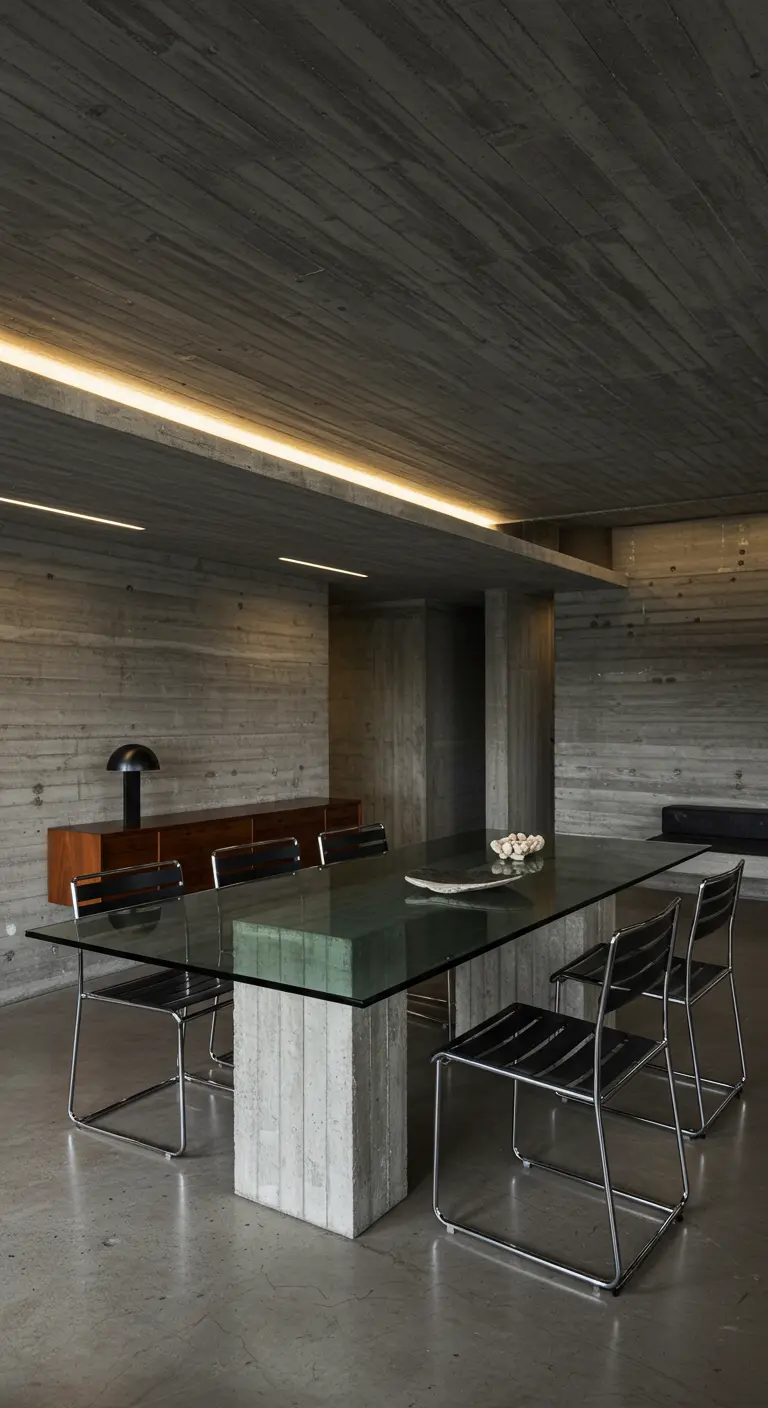
In a Brutalist interior dominated by raw concrete, the reflective quality of glass is a powerful design tool.
A thick glass tabletop breaks up the monolithic feel of the concrete walls and base, bouncing light around the space and preventing it from feeling oppressive.
The contrast between the rough, matte finish of the concrete and the polished, smooth surface of the glass creates a dynamic and sophisticated material dialogue.
10. Achieve a Seamless Look with Integrated Lighting

For an ultra-modern, clean aesthetic, build your lighting directly into the room’s architecture.
Linear LED strips recessed into the ceiling create a grid of light that feels intentional and futuristic. The glow reflects beautifully across the high-gloss floors, sleek cabinetry, and the glass dining table, unifying the entire space.
This is one of the most effective lighting tricks to expand tiny interiors, as it makes the ceiling feel higher.
11. Integrate Modern Transparency in a Rustic Setting

You can introduce modern elements into a rustic home without creating a jarring disconnect.
A glass dining table is a superb choice for a cabin or lodge because it offers contemporary sleekness while preserving sightlines to cherished rustic features like a stone fireplace or a forest view.
Pair it with chairs in warm leather and a sculptural wood side table to ground the look within its natural, modern rustic context.
12. Juxtapose Classic Glamour with Modern Forms
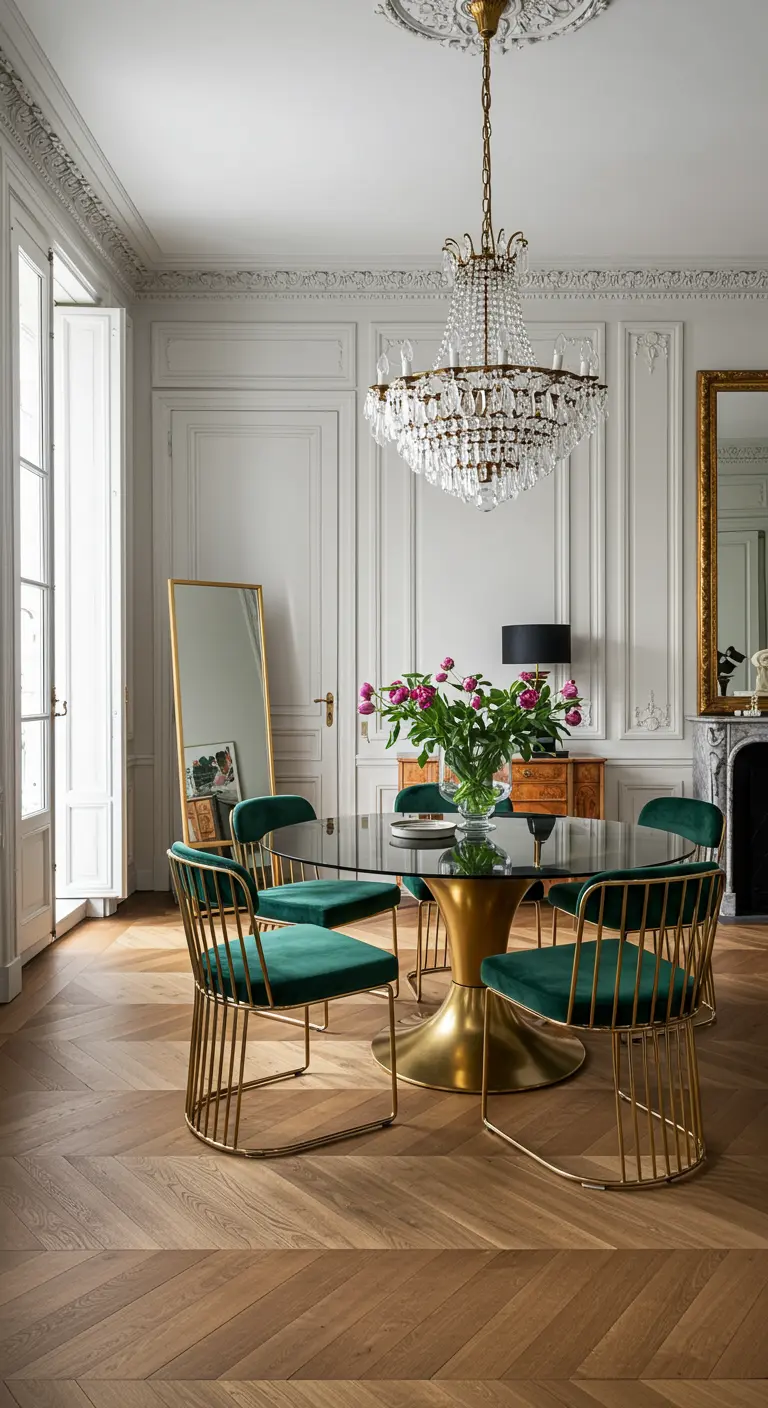
Create an electrifying design moment by pairing historic architecture with bold, contemporary furniture.
In a classic Parisian-style interior, the ornate mouldings and crystal chandelier are beautifully challenged by the clean lines of a glass table and modern, sculptural chairs in jewel-toned velvet.
The glass acts as a neutral plane, allowing the herringbone floors, rich fabrics, and gilded frames to coexist harmoniously.
13. Connect to the Landscape Through Warm Tones
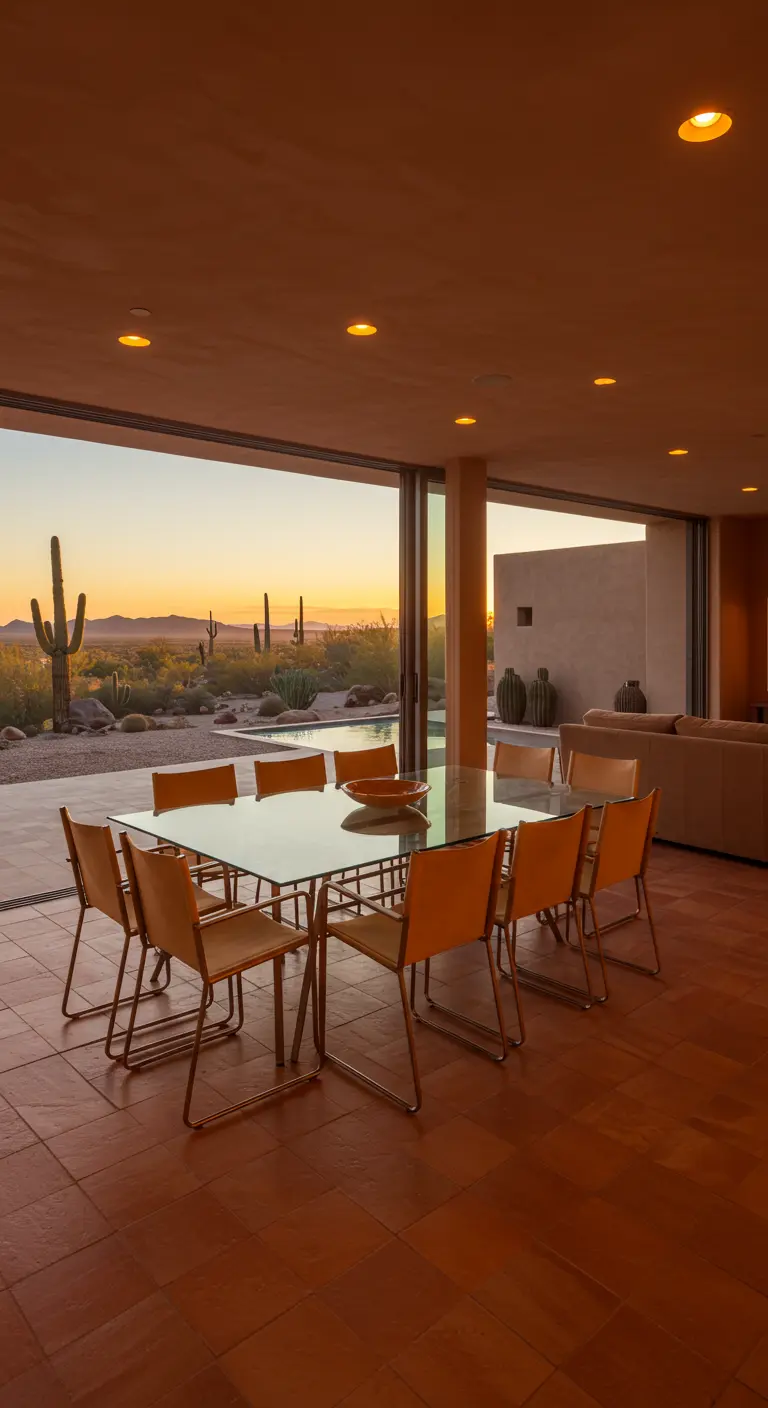
Create a seamless transition between your interior and the surrounding environment by borrowing from nature’s palette.
In a desert setting, warm terracotta floor tiles and dining chairs in a honey-hued wood finish echo the tones of the earth and the golden hour light.
An expansive glass table is crucial here, ensuring the magnificent view remains the hero of the space and enhancing the feeling of a true desert oasis.
14. Amplify Greenery in an Urban Jungle
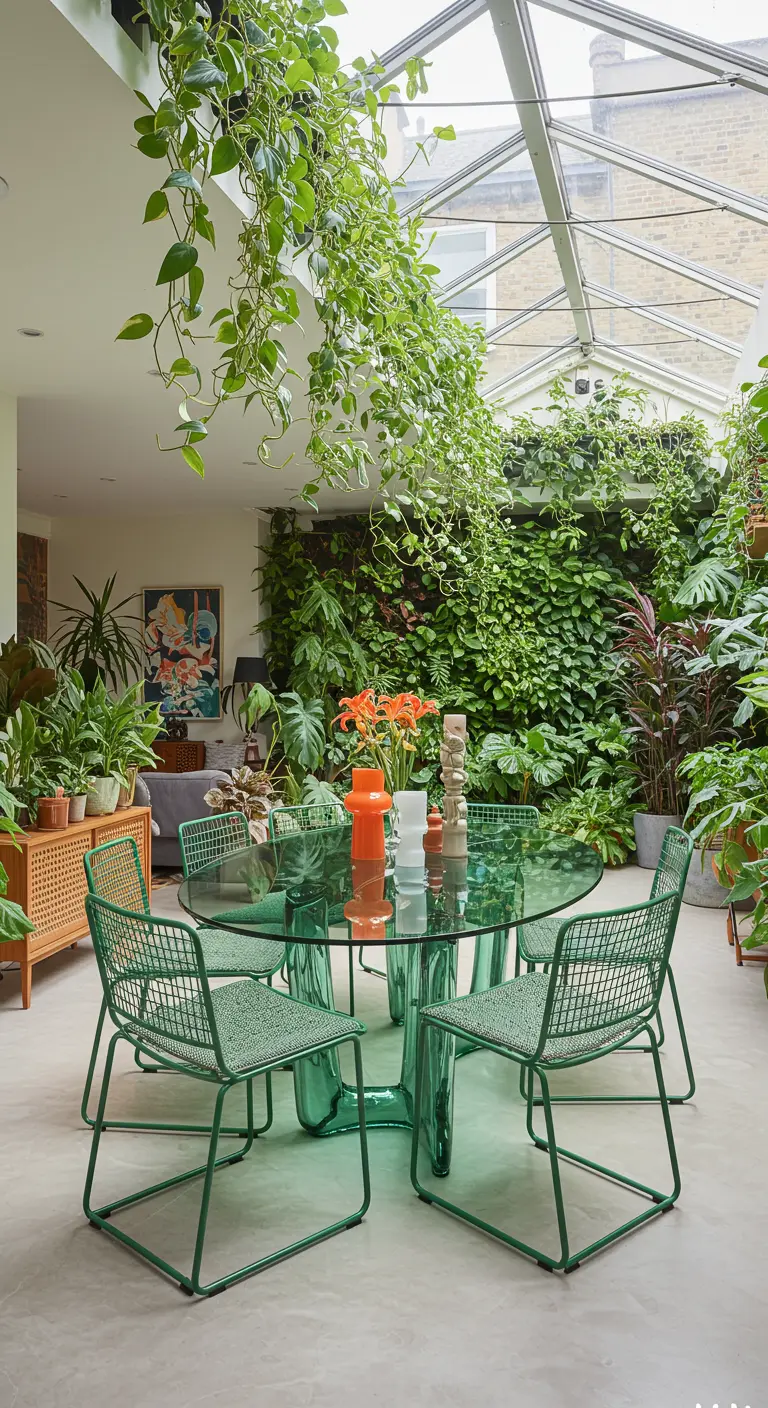
In a plant-filled room or atrium, a glass table is your greatest ally.
Its transparency prevents it from visually competing with the lush foliage, allowing the cascading leaves of a living wall and potted plants to be fully appreciated.
Choosing chairs and a table base in a complementary shade of green creates a cohesive, immersive botanical retreat that feels vibrant and alive.
15. Define a Minimalist Zone with a Single Pendant
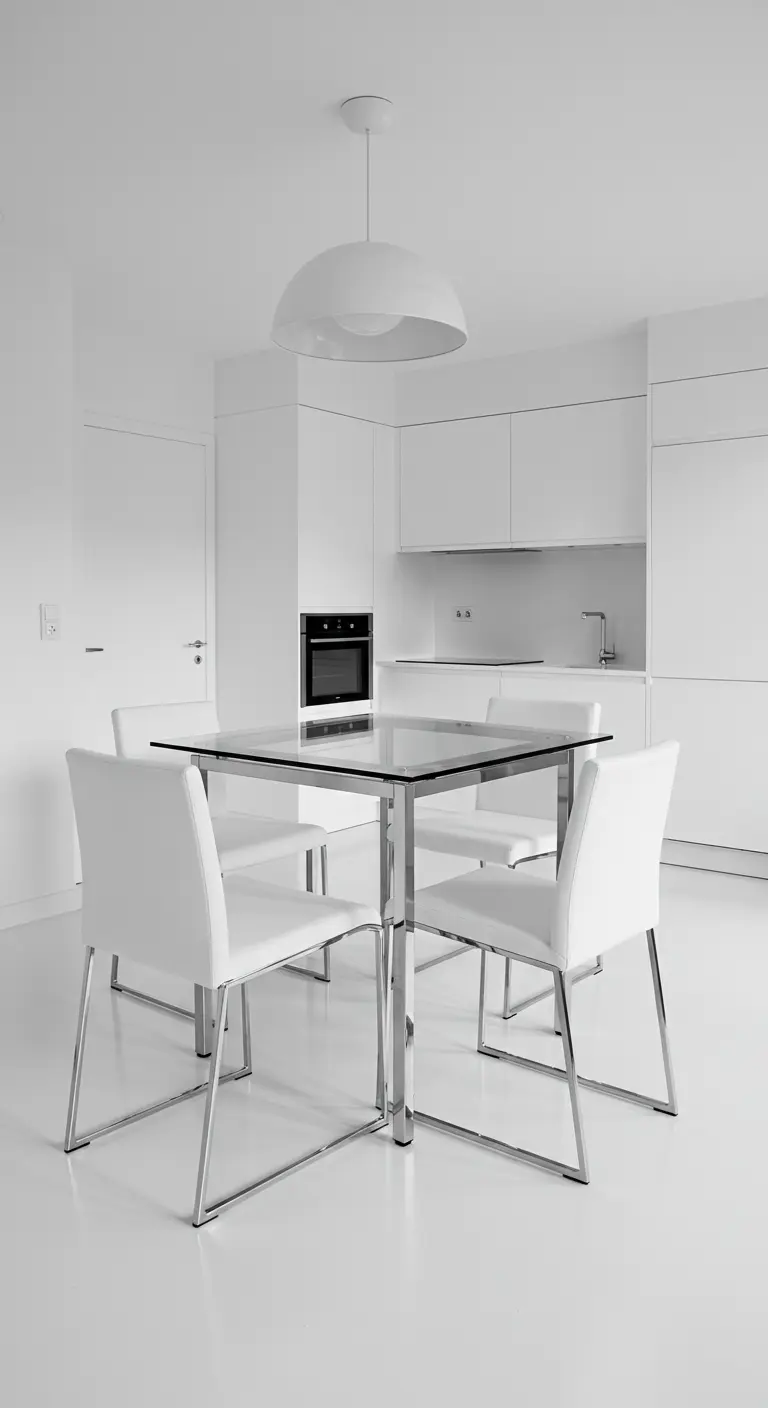
In a hyper-minimalist, white-on-white open-plan space, a single piece of lighting can do the work of walls.
By hanging a simple dome pendant directly over the dining table, you create a powerful visual cue that anchors the setting and designates it as a distinct area.
The glass table and chrome-legged chairs reinforce this feeling of clean, uncluttered space, resulting in a composition of purposeful simplicity.
16. Use Paired Pendants for Focused Intimacy

Instead of one large, central fixture, consider hanging a duo of smaller pendants lower over a rectangular table.
This technique creates two distinct pools of warm light, fostering a more intimate and conversational atmosphere for you and your guests.
The warm glow reflecting in the glass tabletop doubles the effect, enhancing the cozy ambiance in a room with rich textures like exposed brick and wood floors.
17. Complement a Water View with a Cool Palette
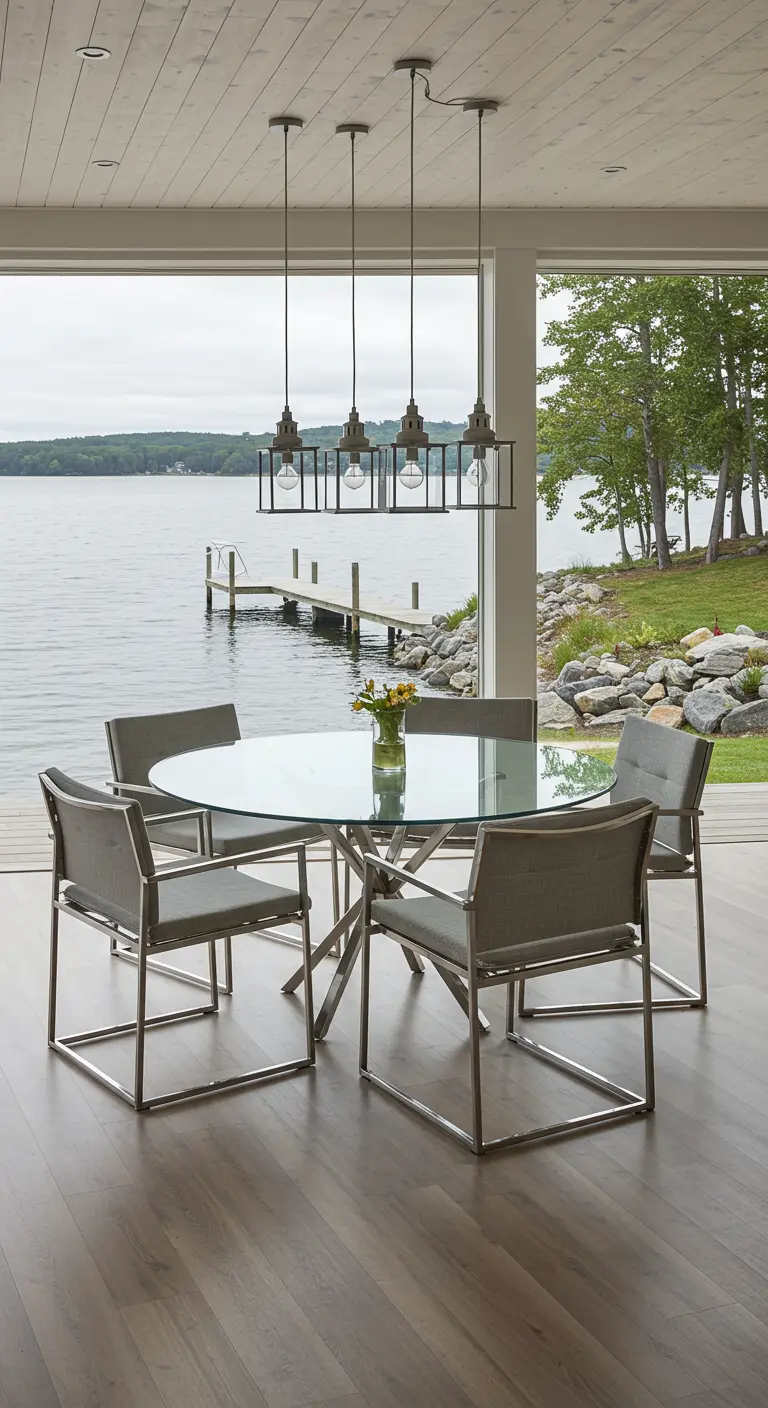
When your home overlooks a serene lake or ocean, let your interior palette reflect the tranquility of the view.
Cool tones like grey, brushed steel, and silver, paired with the clarity of a glass table, harmonize with the water’s blues and greys.
A linear light fixture suspended above the table subtly mirrors the horizontal line of the horizon or a distant shoreline, creating a deeply calming and cohesive design.
18. Create an Island of Calm in a Creative Space
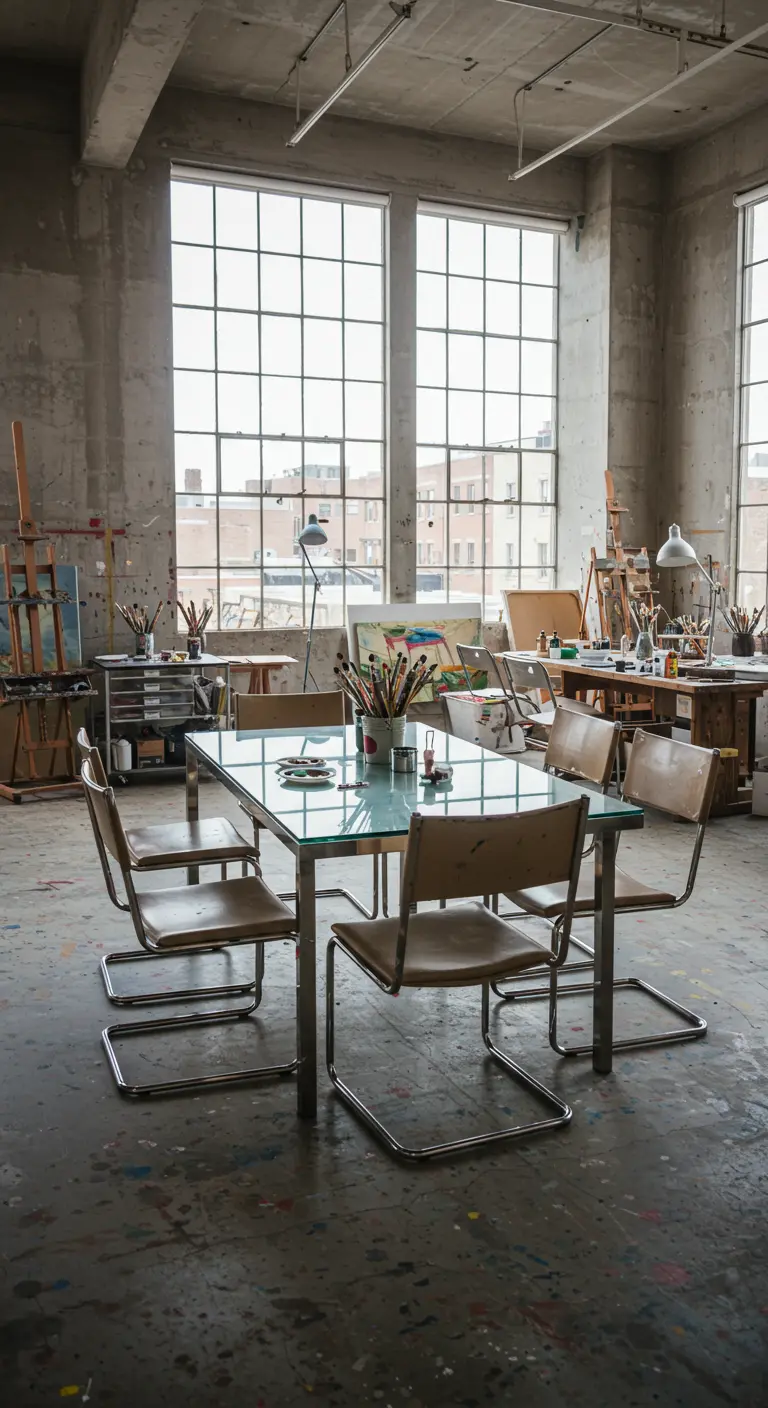
In a working artist’s studio or a home filled with eclectic collections, the dining area can serve as a point of visual rest.
A simple glass-and-chrome table offers a clean, uncluttered surface that provides a necessary contrast to the beautiful, creative chaos surrounding it.
It acts as a functional island of order, a place to gather and reset, proving that minimalism can be a powerful tool even in the most maximalist of environments.
19. Layer in Warmth with Unexpected Texture
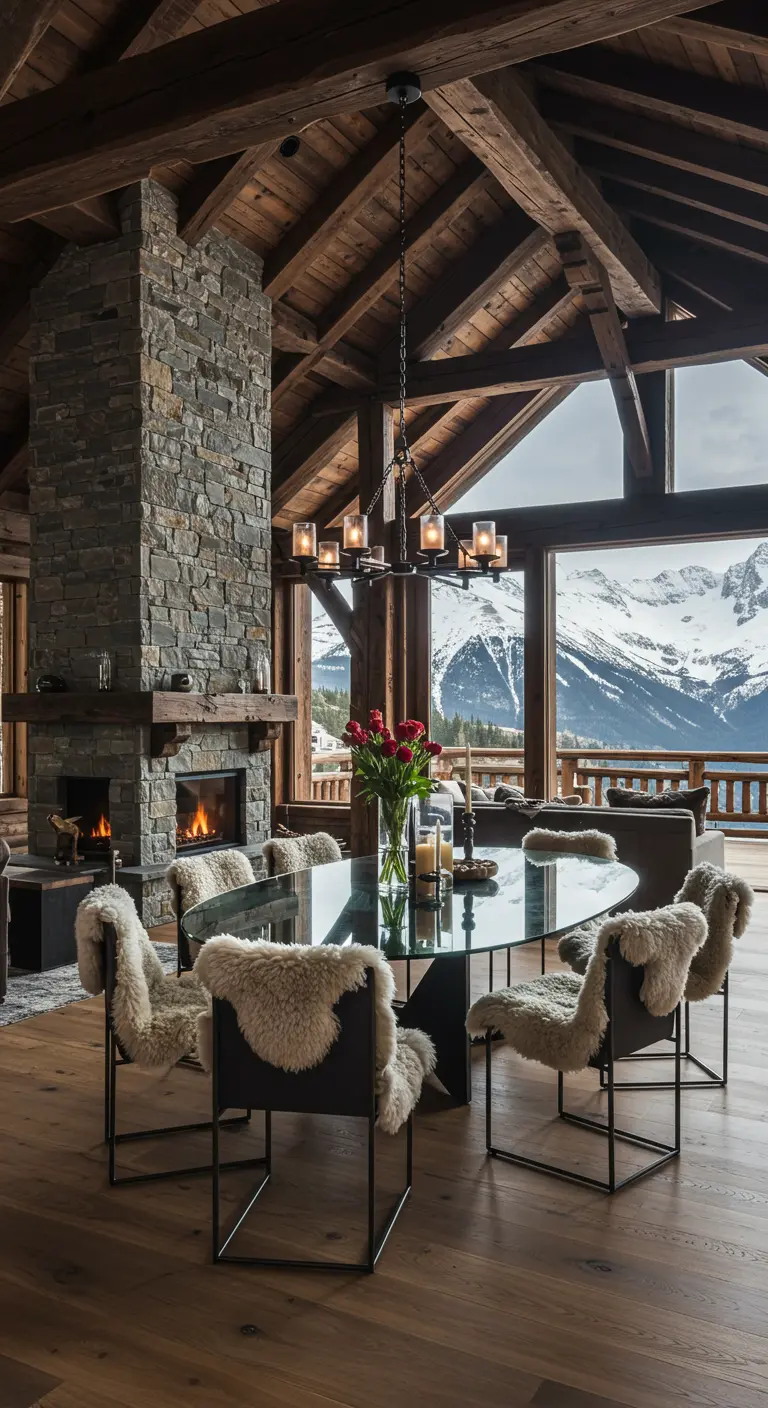
Instantly transform the character of simple steel-frame chairs by adding a layer of luxurious texture.
Draping plush, cozy faux sheepskin throws over the seats and backs introduces incredible warmth and a touch of alpine chic.
This simple addition creates a wonderful contrast against the sleek glass table, rugged stone, and wood beams of a mountain lodge, making the space feel both sophisticated and inviting.
20. Create Evening Magic with Overhead Lighting
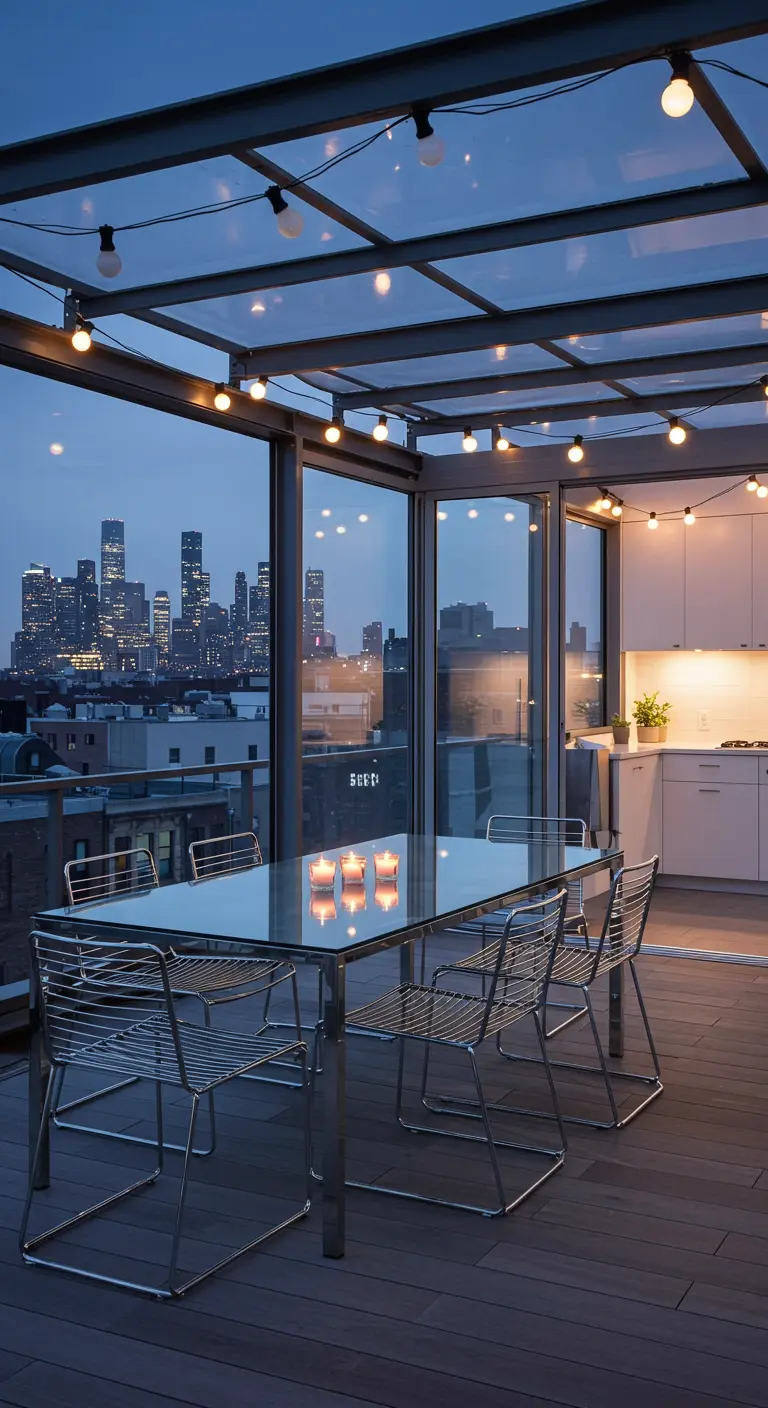
Elevate any outdoor or glass-enclosed dining area into a magical setting with simple string lights.
Drape strands of warm, round globe lights overhead. As dusk falls, their glow will reflect in the glass tabletop, doubling the twinkling effect and casting a flattering, intimate light.
It’s an easy, high-impact way to create a festive, café-like atmosphere against a glittering city skyline.
21. Honor a Home’s Era with Iconic Shapes
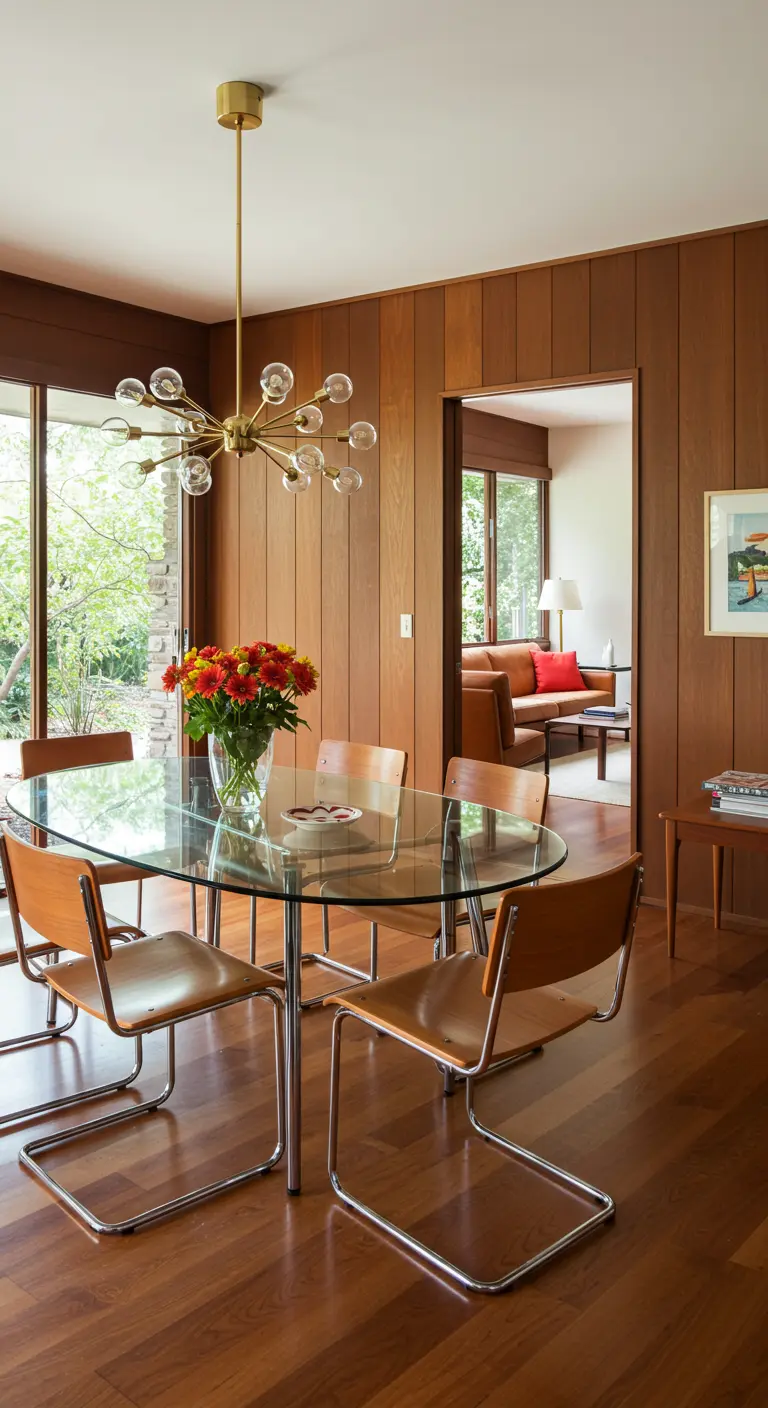
When your home has strong architectural character, choose furnishings that speak the same design language.
For a Mid-Century Modern interior, iconic pieces like a Sputnik chandelier and cantilever chairs in chrome and leather feel authentic and intentional.
An oval glass tabletop is the perfect complement, as its clean, soft curves feel both of the era and timeless, while its transparency prevents the rich wood paneling from overpowering the room.
22. Contrast Historic Grandeur with Modern Minimalism

In a space with dramatic, historic architecture, the most powerful statement you can make is one of restraint.
A sleek, unadorned glass table serves as a quiet, modern counterpoint to the grandeur of vaulted ceilings and stained glass.
It doesn’t compete for attention. Instead, its transparency allows the magnificent architectural details to remain the undisputed focus, bridging centuries of design with grace.
23. Anchor Your Dining Set with a Bold Rug
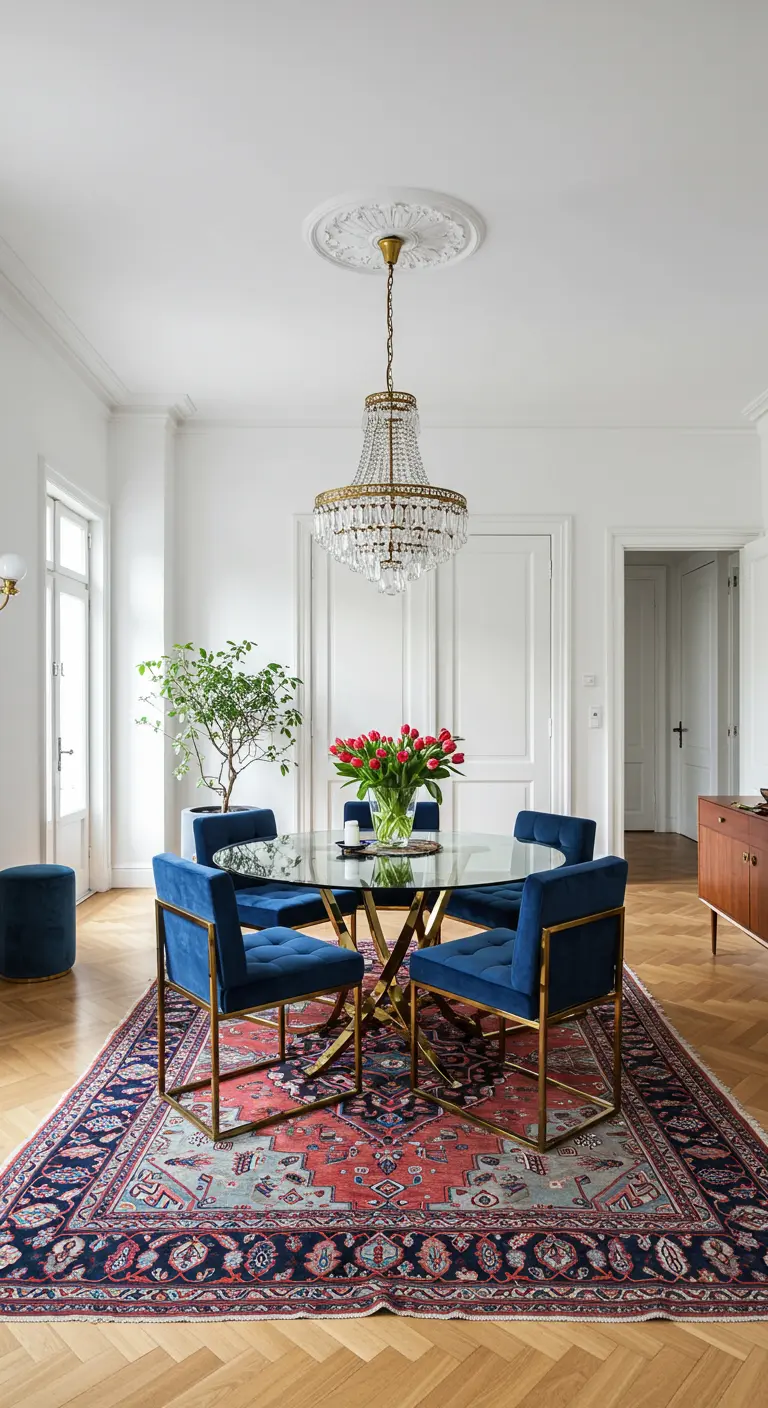
Use a large, patterned rug to define your dining space and inject a foundational layer of color and personality.
A vibrant rug grounds a transparent glass table and adds visual weight, creating a cohesive zone that feels like a deliberate, decorated room.
For a sophisticated, layered look, pull a dominant color from the rug—like this deep blue—and use it for your chair upholstery. Always ensure the rug is large enough for all chair legs to remain on it, even when pulled away from the table.
